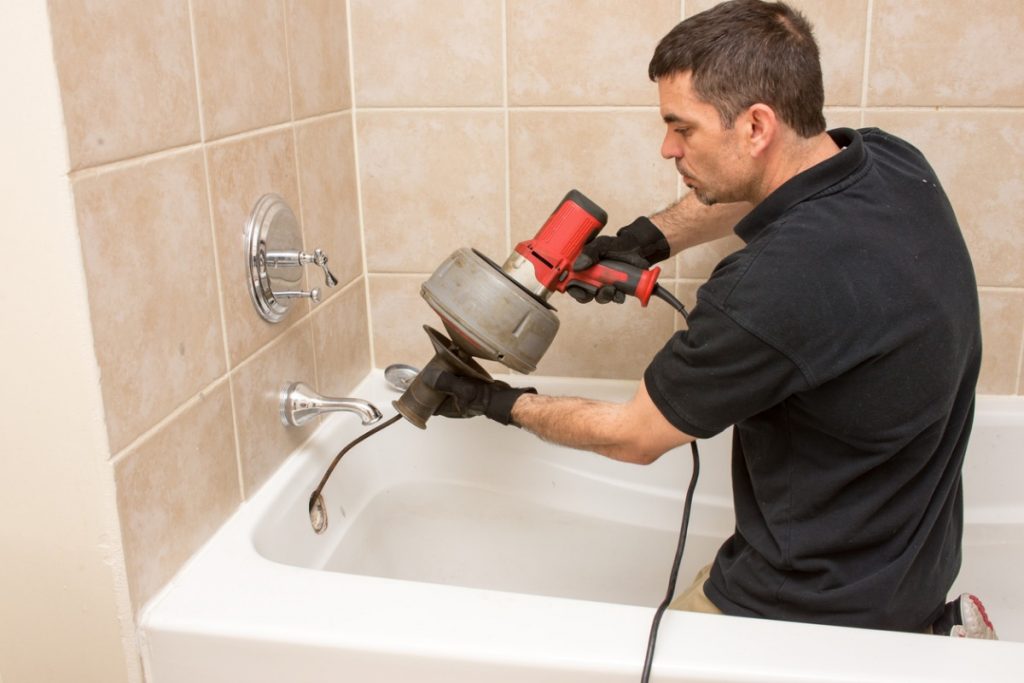Presented here underneath you can find a bunch of great tips concerning 11 Must-Read Tips for Plumbing a New House.

For brand-new property owners, understanding and maintaining shower room pipes can conserve both time and money by protecting against expensive issues down the line. Below are some crucial shower room plumbing pointers to assist you keep every little thing running smoothly.
Plan For Cold Weather
Secure your pipelines from freezing during winter by insulating pipes in unheated locations like cellars, attics, and garages. Throughout extreme cold, allow cold water drip from taps served by exposed pipelines to help avoid cold.
Schedule Routine Maintenance
Take into consideration organizing yearly inspections with a certified plumber. They can find problems that you may miss out on, such as hidden leaks or wear and tear on pipes and fixtures. Normal upkeep aids expand the life of your pipes system and can protect against emergencies.
Acquaint Yourself with the Key Shut-Off Valve
Understanding where the main water shut-off valve lies in your house is vital. This enables you to quickly switch off the water in case of significant leaks or throughout pipes emergencies, stopping considerable water damages.
Consistently Inspect for Leakages
Little leakages can cause large troubles. Routinely check under sinks, around bathrooms, and near plumbing components for any type of signs of leakages. Seek wetness, tiny drips, or rust. Capturing and repairing leakages early can prevent extra major damage and save water.
Preserve Your Hot Water Heater
Ensure your water heater is set to a suitable temperature (generally around 120 degrees Fahrenheit) to avoid scalding and reduce power use. Flush the storage tank yearly to remove sediment accumulation, which can minimize the performance and life-span of your heating unit.
Upgrade Your Fixtures
If your home has older fixtures, think about updating to more reliable models. Modern toilets, showerheads, and taps are made to make use of less water while supplying excellent pressure, which can substantially minimize your water expense and environmental footprint.
Beware with DIY Pipes Fixes
While it's tempting to manage all home repair work by yourself, be cautious with pipes. Some issues could require specialist know-how, specifically if they entail main water lines or sewer repair work. Employing an expert can often be a lot more economical than do it yourself, particularly if it avoids additional damage.
Do Not Overlook Slow Drains
If your sink or bathtub is draining pipes slowly, it's commonly a sign of a clog developing. Resolving this very early can prevent a total blockage. Utilize a plunger or a plumbing's snake to remove particles. Prevent utilizing chemical drain cleansers as they can harm your pipes gradually.
Know What Not to Flush
Commodes are not waste disposal unit. Prevent flushing anything besides toilet tissue and human waste. Things like wipes, womanly hygiene items, and cotton bud must be disposed of in the garbage to stop blockages and sewer backups.
Mount Strainers in Drains
Location strainers in your sink and bath tub drains pipes to capture hair and other debris before they enter your plumbing system. Cleaning the strainers frequently will assist protect against buildup and keep water moving easily.
Final thought
Comprehending and keeping your home's bathroom pipes can avoid numerous usual issues. By following these essential suggestions, you can guarantee your bathroom stays practical and reliable, saving you money and time in the future.
Essential Plumbing Tips for Homeowners: Keep Your Pipes Flowing Smoothly
As a homeowner, understanding the basics of your plumbing system can save you time, money, and a lot of headaches. Plumbing issues can range from minor annoyances like dripping faucets to major problems like burst pipes that cause significant damage. This guide provides essential tips to help you maintain your plumbing system and tackle common issues.
Understanding Your Plumbing System
Supply System: Brings fresh water into your home from a municipal source or a well. Drain-Waste-Vent System: Removes wastewater and vents sewer gases outside. Fixtures and Appliances: Includes sinks, toilets, showers, dishwashers, and washing machines. Basic Maintenance Tips
Regular Inspections: Periodically check for leaks, corrosion, and other signs of wear and tear. Look under sinks, around toilets, and near water heaters. Know Your Main Shut-Off Valve: In case of a major leak, you’ll need to shut off the water quickly. Ensure everyone in your household knows where the main shut-off valve is located. Prevent Frozen Pipes: In cold climates, insulate exposed pipes and let faucets drip during extreme cold to prevent freezing. Use Strainers: Install strainers in sinks and tubs to catch hair, food particles, and other debris that can cause clogs. Common Plumbing Issues and Solutions
Clogged Drains:
Prevention: Avoid pouring grease down the drain and use drain screens to catch debris. DIY Fix: Use a plunger or a plumbing snake to clear minor clogs. For stubborn clogs, a mixture of baking soda and vinegar can sometimes help. Leaky Faucets:
Prevention: Replace washers and seals regularly. DIY Fix: Turn off the water supply, disassemble the faucet, and replace worn parts.

Automated Marketing